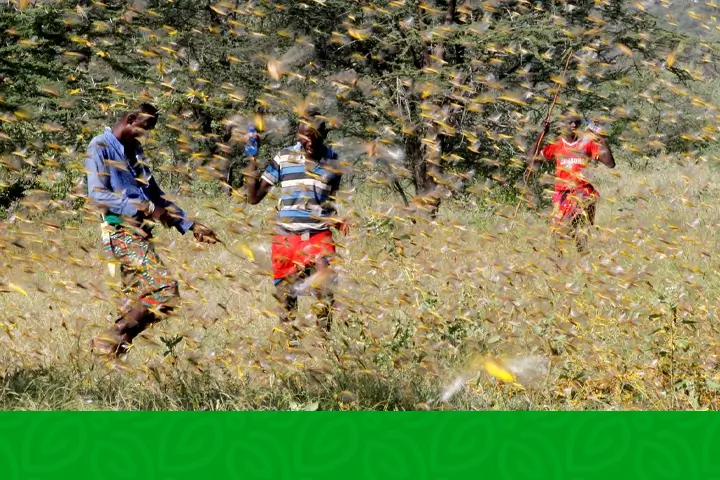
Climate Forum Highlights Urgent Need for Preparedness and Collaborative Action
In a somber revelation echoing through the halls of the Trademark Hotel, Gigiri, experts issued a grave warning: Kenya stands on the precipice of yet another desert locust invasion. This dire forecast emerged during the 65th Greater Horn of Africa Climate Outlook Forum, a gathering that united a multitude of stakeholders to deliberate on critical climate-related challenges.
As the theme “Climate Services for Scenario Planning and Resilience Building” set the stage, the message was clear: the looming threat of desert locust infestation demands immediate attention.
Guleid Artan, Director of IGAD-Climate Prediction and Applications Center (ICPAC), delivered the unsettling news. “The specter of desert locust infestation looms large,” Artan stated. Reports from northern Ethiopia and Eastern Sudan painted a concerning picture – the conditions for a locust infestation are taking shape.
“As the rains grace this region, the environment could potentially become conducive for a desert locust invasion,” Artan cautioned. It’s a chilling reminder of the devastating invasions witnessed in 2019 and 2020.
Currently free from the clutches of desert locusts, Kenya’s respite might be temporary. Artan painted a sobering picture, suggesting the infestation could last for about a year. The situation, however, isn’t entirely bleak. The region is now better equipped to combat the invasion, armed with coordination, aircraft, and pesticides.
“Ethiopia has procured five aircraft for locust control, and every neighboring country boasts similar arsenals,” Artan revealed. Enhanced collaboration and preparation have fortified the region’s defenses. Yet, the battle ahead is daunting.
“Preparedness is paramount,” Artan stressed, urging communities to share critical information about impending invasions with local authorities. Desert locusts, relentless in their path, respect no borders. The ramifications of unchecked infestations could devastate livelihoods and communities.
Kenneth Mwangi, an agriculture monitoring expert using satellite data from IGAD Climate Prediction Centre, underscored the role of climate change in driving pest invasions. “Climate extremes breed extreme challenges, including pest invasions,” Mwangi explained. Through rigorous monitoring, they track pests’ movements and assess potential threats.
“We track the migratory patterns of desert locusts across Yemen, South Arabia, Egypt, Sudan, Eritrea, Djibouti, and Ethiopia, then compile early warning information,” Mwangi detailed. The implications of this early warning are weighty, as locusts, compounded by El Niño and climate shocks, could multiply into menacing swarms.
Mwangi’s clarion call is clear: the time to act is now. Collaboration between desert locust control organizations and Kenya’s Ministry of Agriculture is paramount. Adequate supplies of pesticides and meticulous planning can stave off disaster. His concerns extend to other pests, notably the resurgence of armyworm, which further compounds the challenges.
While the prospect of enhanced rains after years of drought brings hope, experts cautioned against complacency. Flash floods, landslides, and other adversities can offset the benefits. As the climate shifts, the need for proactive measures intensifies.
In the face of adversity, collaboration and preparedness remain humanity’s strongest armor. The experts’ words reverberate beyond the forum’s walls, calling on Kenya to stand united against the impending threat. As another chapter unfolds in the intricate dance between climate and mankind, the time to write our response is now.
Stay updated with the latest farming tips and agriculture industry news from Africa by subscribing to our newsletter. Don’t miss out on valuable insights and updates. Follow us on Twitter, LinkedIn, and Facebook to join our farming community and stay connected with us.



















